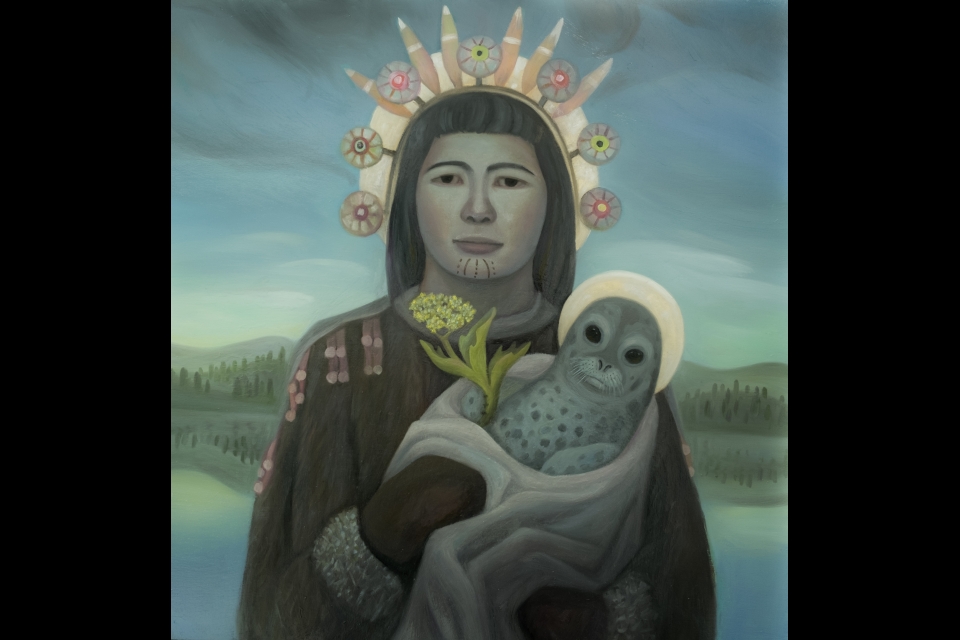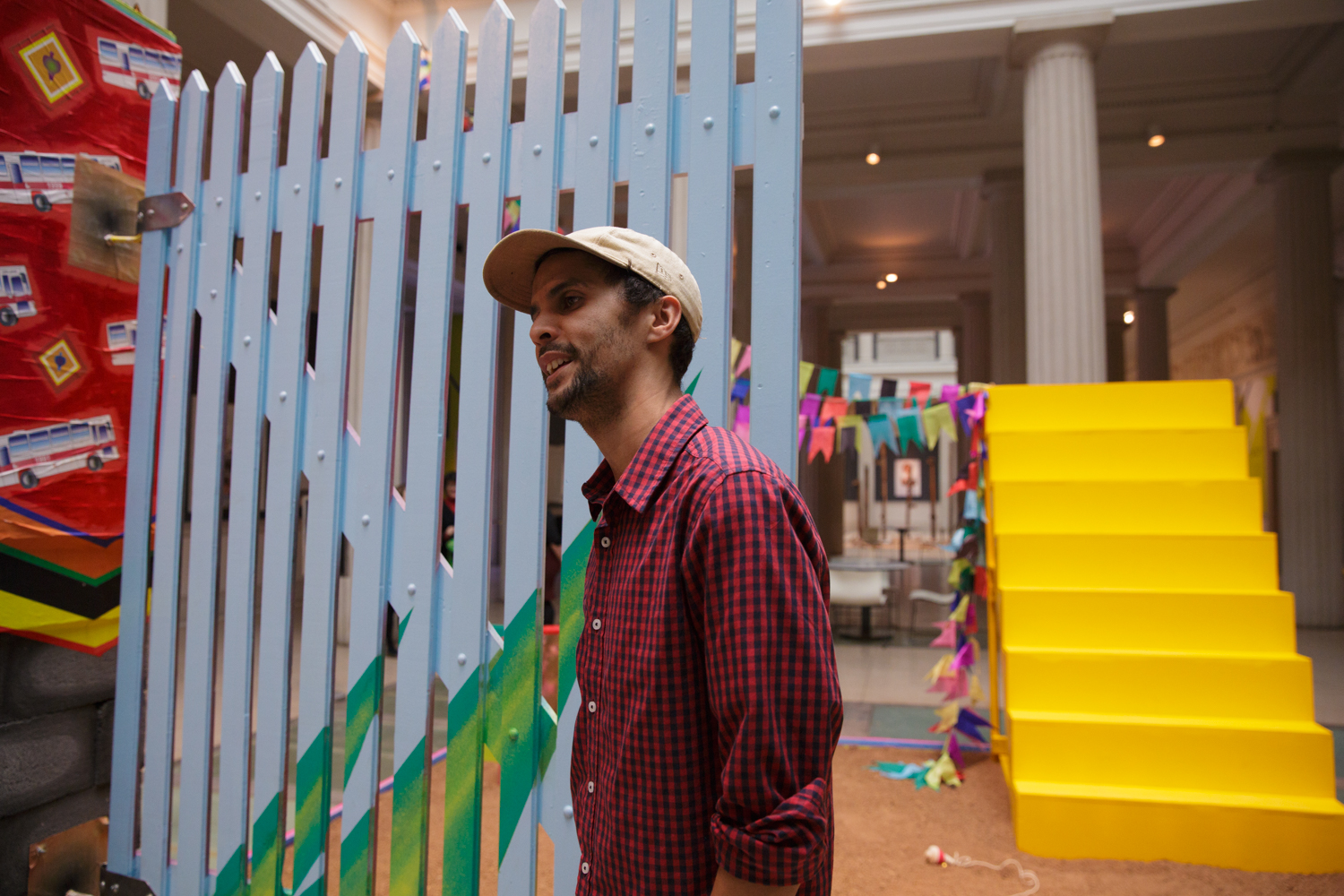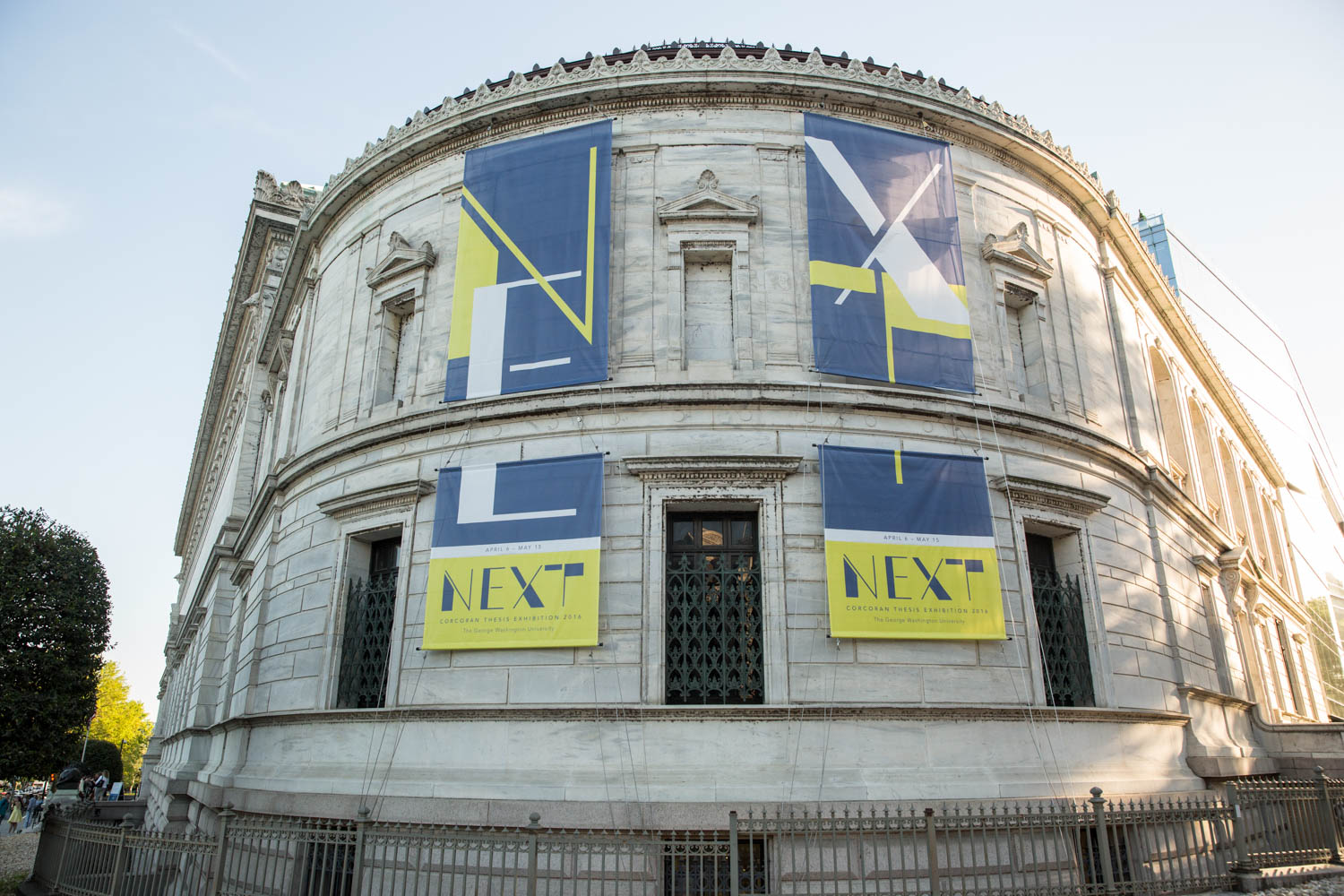At first glance, Linda Infante Lyons’s painting “St. Katherine of Karluk” resembles a religious Christian icon of a Madonna holding a child. However, when you inspect the image closely, you notice several symbols that reflect Alaska’s ancient history: The Madonna has dark skin and an Alutiiq tribal tattoo representing feminine strength. The child she is holding is actually a baby seal, signifying a connection to animal spirits and the natural world.
Through her piece, Ms. Lyons rediscovers cultural and ancestral traditions that were nearly lost through the colonization of Alaska. Her painting is just one of the artistic works that appears in “Decolonizing Alaska,” the first exhibition of the year at the Corcoran School of Arts and Design. Thirty-one artists interpret some of the most critical issues that Alaska faces, from climate change to cultural sustainability.
The traveling exhibition is sponsored by the Bunnell Street Arts Center and supported in part by grants from ArtWorks, the CIRI Foundation and Rasmuson Foundation. Additional support comes from the Harper Arts Touring Fund, administered, under contract, by the Alaska State Council on the Arts. The show premiered at GW on Feb. 3 and will be open to the public until March 18 in the Corcoran atrium as part of the school’s focus on exploring social issues through art.
“We’re honored to be the first venue in the lower 48 states to show this work,” Corcoran School Director Sanjit Sethi said. “There’s never been a more important time to talk about indigenous issues and indigenous cultural politics than now.”
The exhibition’s curator, Asia Freeman, grew up in Alaska, where her mother produced public radio stories about Alaskan natives witnessing changes in their communities. She says those stories were etched into her memory, and she began noticing more conversations that revolved around the region’s identity politics and environmental challenges when she began working in the arts.
“When I was a child, I felt like Alaska was far away from everything, but concerns about climate change and cultural preservation have really pushed Alaska to the center of a lot of discourse today,” she said. “I started to see these ideas playing out in art by both native and non-native artists, so the idea of decolonization came about.”
Some of the artists in the exhibition include Susie Silook, whose powerful piece “The Healer” tackles trauma and healing in Native American communities, and Sheila Wyne, who wonders whether or not the history of colonization in Alaska will breed more violence in her work “Chrysalis.”
Several artists joined Ms. Freeman for a discussion about the show on Feb. 4 at the Corcoran. On Feb. 5, artist Joel Isaak led a group demonstration for students on how to make salmon skin products. The workshop shows how the Corcoran is engaging with communities and cultures around the country.
“ ‘Decolonizing Alaska’ is a quintessential example of the work our students, faculty and broader community need to see and interact with: artists looking at the complex issues surrounding native Alaskan identity from a social, political and cultural context,” Mr. Sethi said.





